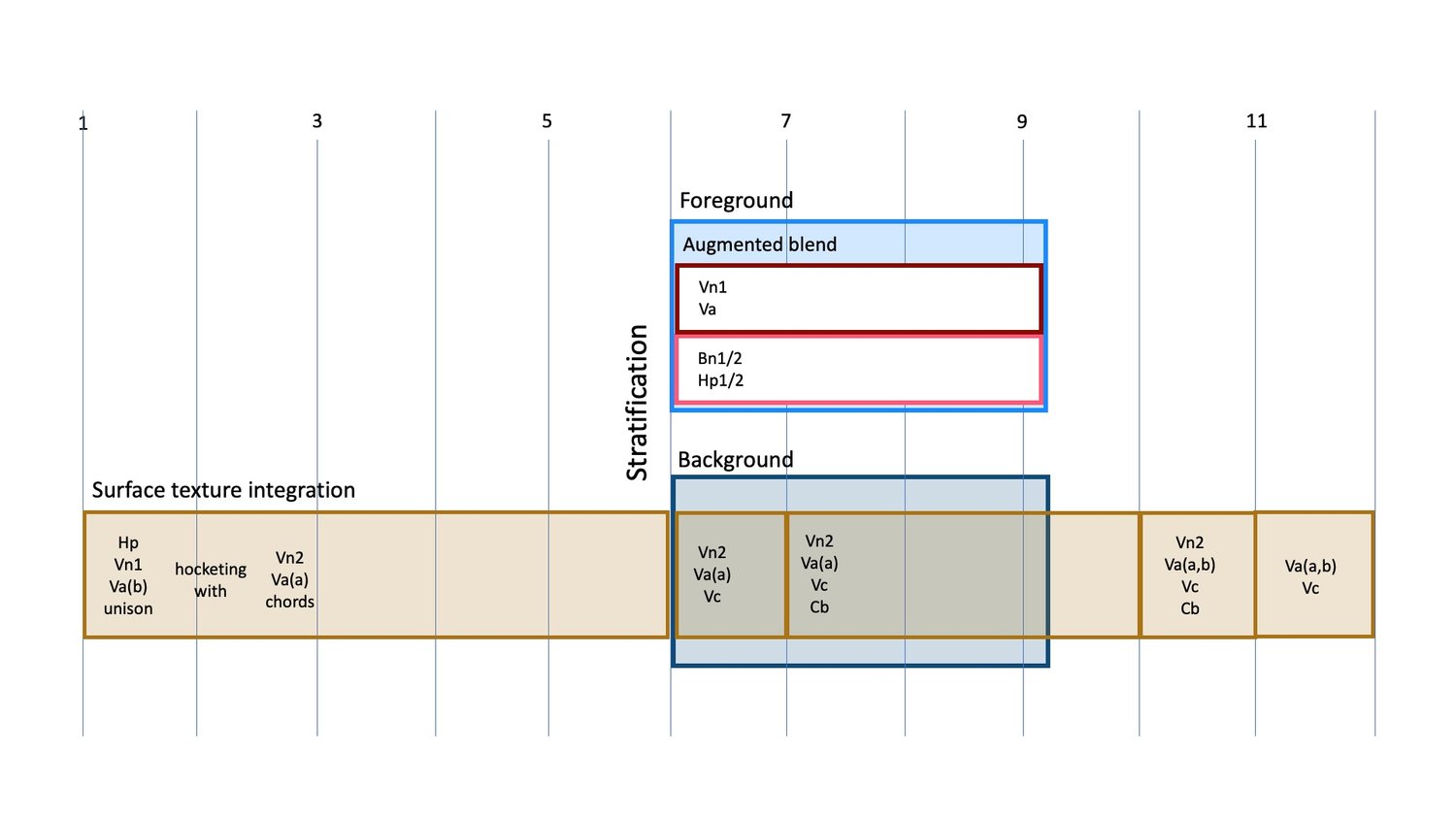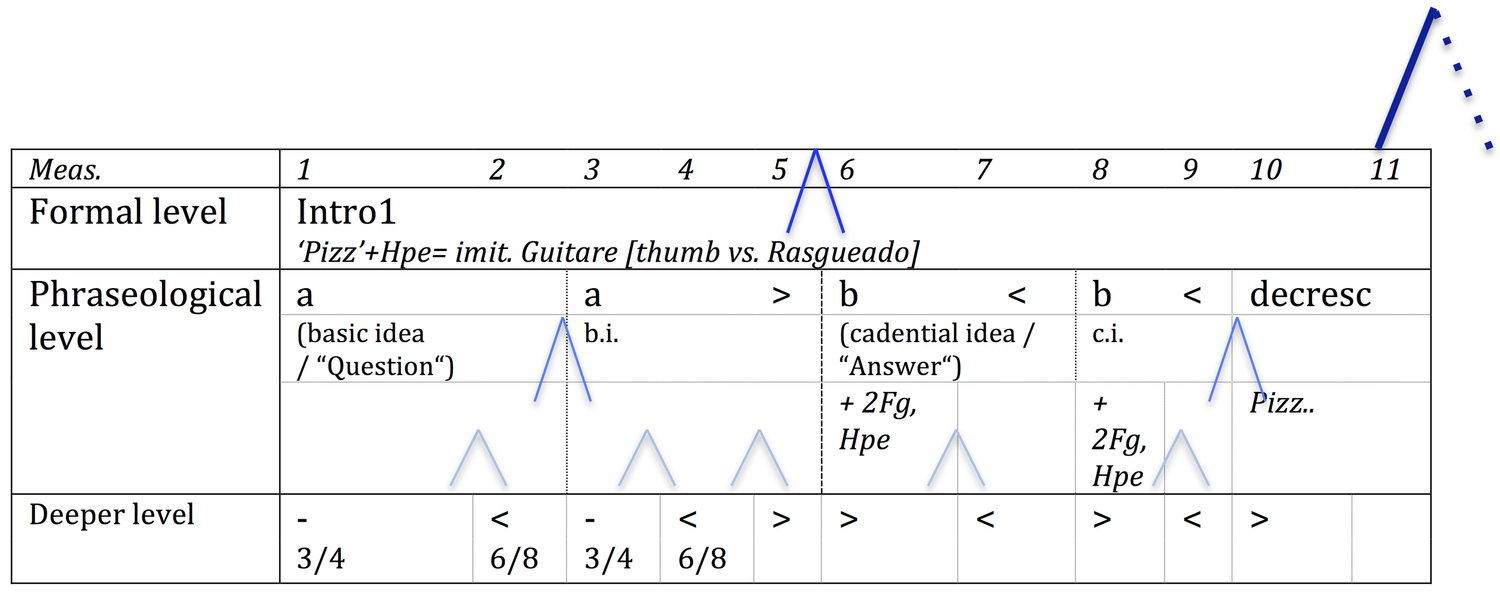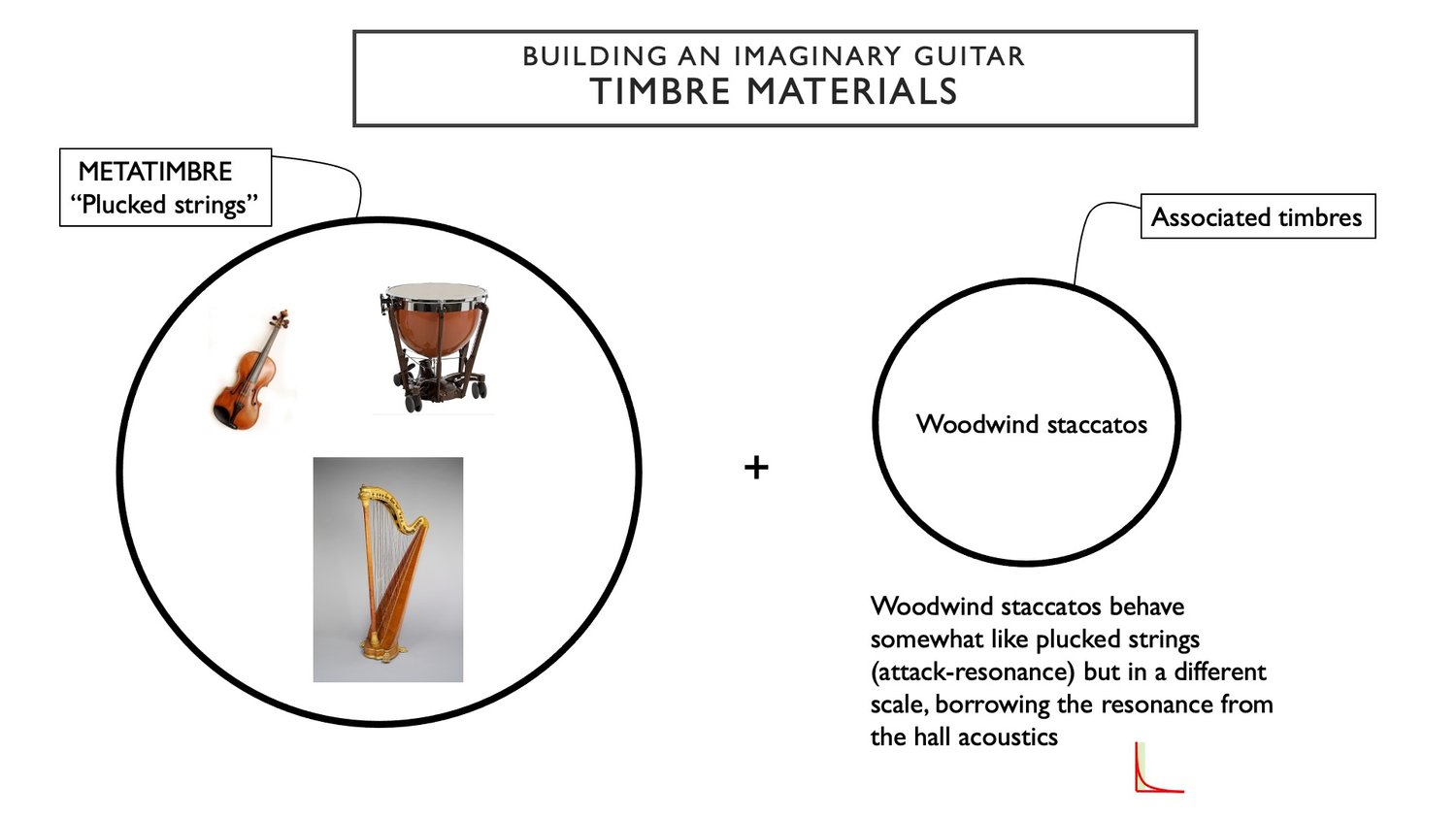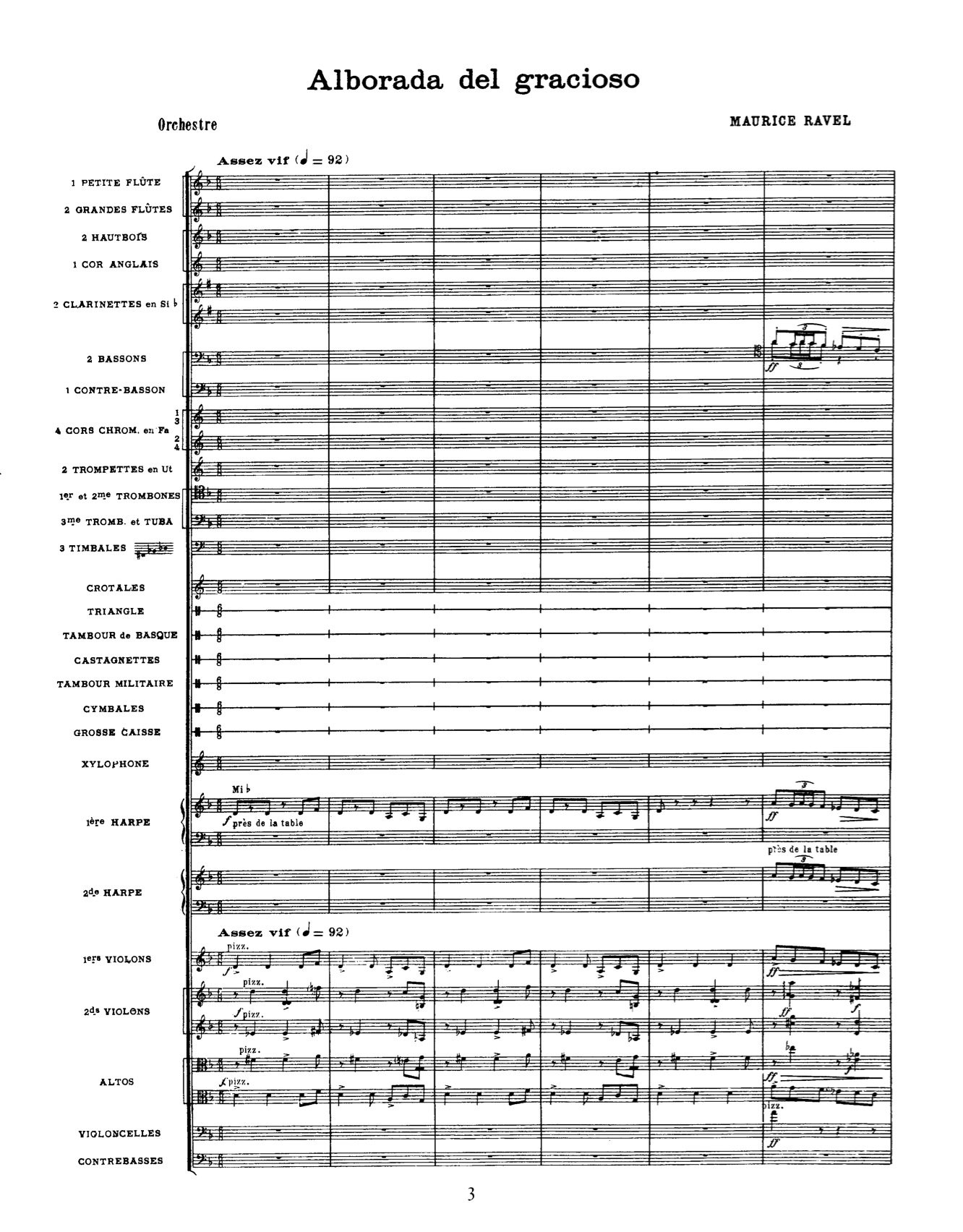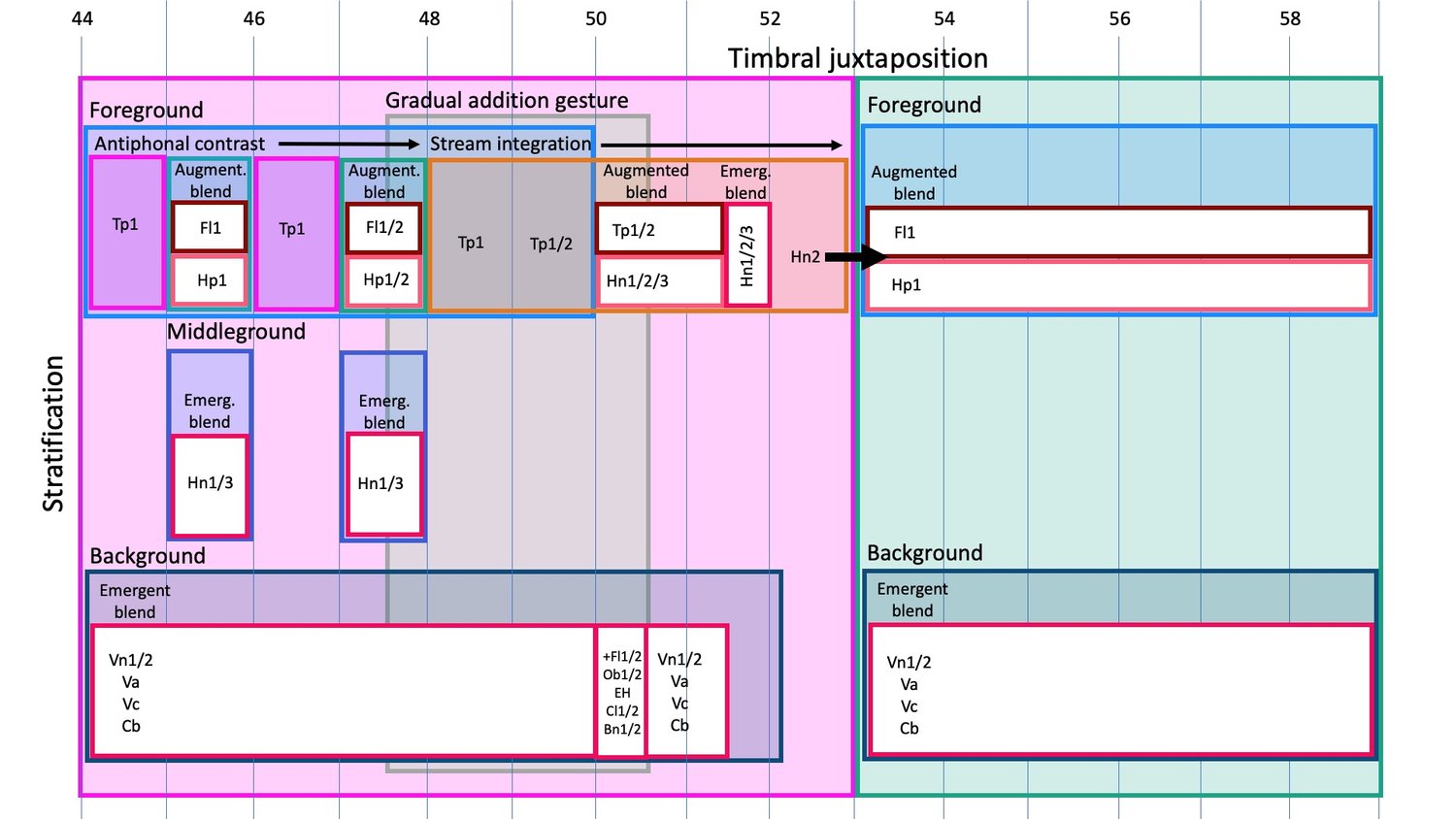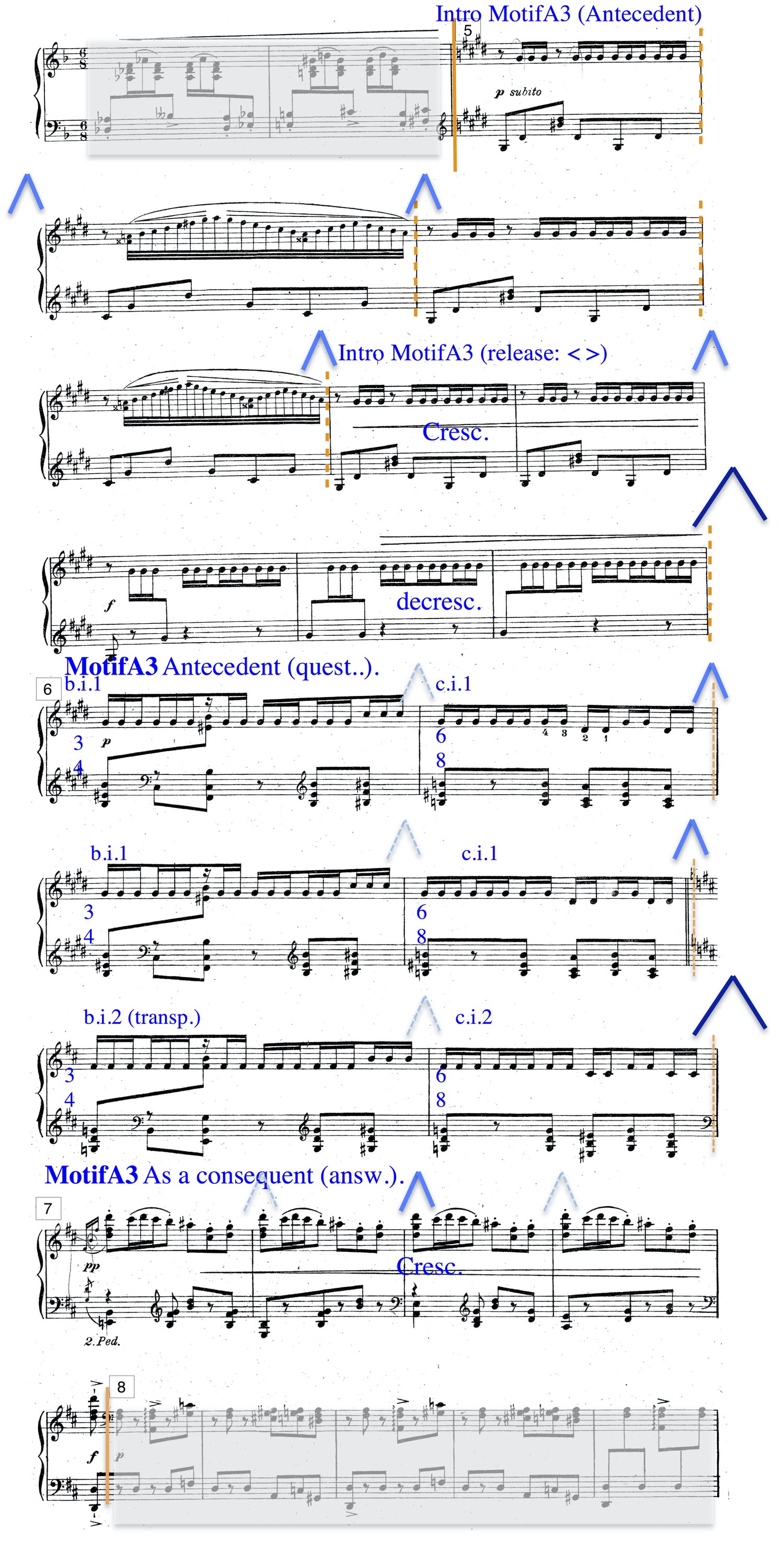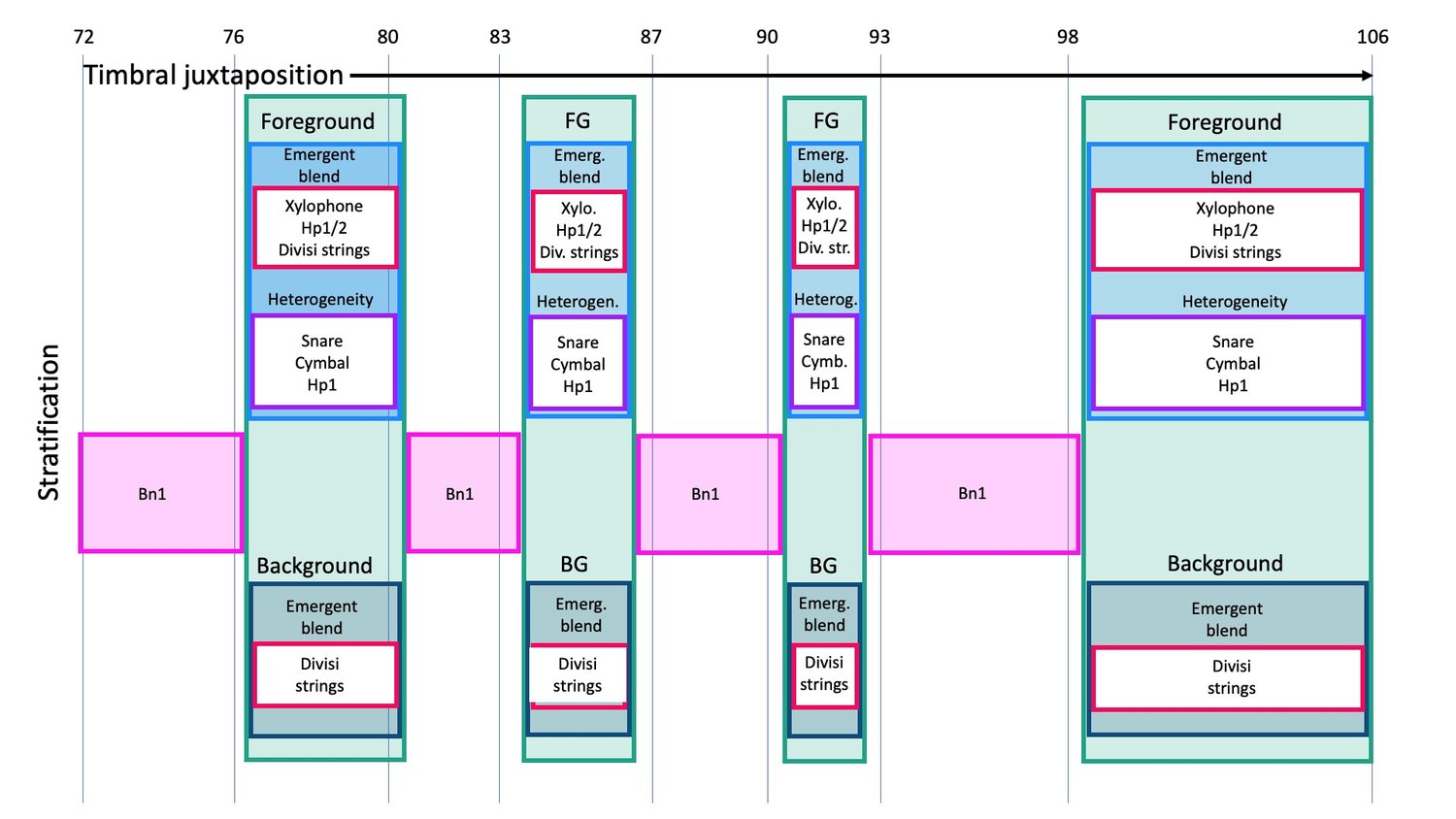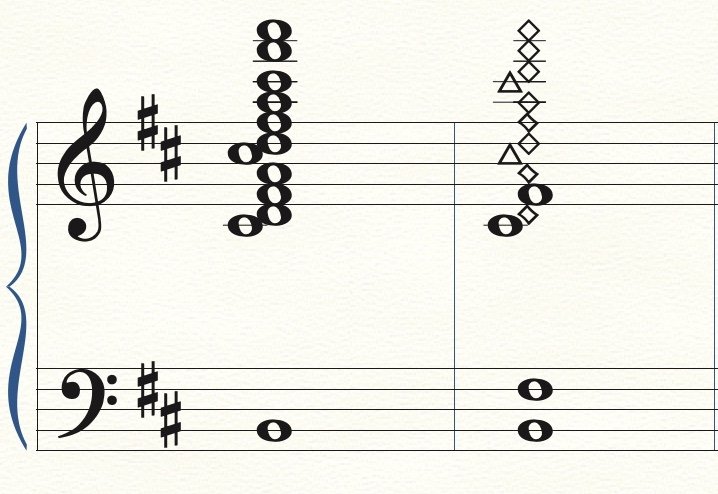Analytical Visualizations: Alborada del gracioso
A Timbral and Orchestrational Pluralistic Analysis of Ravel's Alborada del gracioso
Analytical Visualizations
An in-depth look at Maurice Ravel’s Alborada del gracioso, from multiple taxonomic perspectives. This page contains the all the analytical visualizations, as well as the orchestral and piano scores with accompanying audio.
The sidebar on the top left of the page links to the write-ups pages for each of the different taxonomies or analytic techniques, as well as the audio for each excerpt of music.
In the section below, click through the tabs to view the analyses of various sections of the work and click through the embedded left sidebar to view the different analyses of one section of music.
Excerpt one mm. 1–11
Excerpt two mm. 44–58
Excerpt three mm. 72–108
Form of Alborada del Gracioso [from Functional Orchestration figure 2.1]
Alborada del Gracioso is composed in a simple ternary form: [A vif / B lent (rehears. mark 9) / A’ vif (mark 23)]. Each part is divided into episodes, often imitating the sound of a dance, or a character, or instruments related to Spanish folkloric music (guitar, castanets, rasgueado, etc.).
Section Overview
This section examines mm. 1–11 from multiple taxonomic and analytical perspectives. See the orchestral and piano scores below for reference.
Orchestral Score
Piano Score
Section Overview
This section examines mm. 44–58 from multiple taxonomic and analytical perspectives. See the orchestral and piano scores below for reference.
Taxonomy of Orchestral Grouping Effects
This passage contains a large-scale timbral juxtaposition, contrasting the timbres and textures in the foreground layer of mm. 44-52 with those in the foreground in mm. 53-28 (Figure 2).
Concurrent Grouping
- mm. 44-51: Transforming, sustained emergent blend
- mm. 45-46: Stable, sustained augmentation
- mm. 45-46: Stable, sustained emergence
- mm. 47-48: Stable, sustained augmentation
- mm. 47-48: Stable, sustained emergence
- mm. 50-51: Stable, sustained augmentation
- mm. 53-59: Stable, sustained timbral augmentation
- mm. 53-59: Stable, sustained emergent blend
Sequential Grouping
- mm. 44-53: Transforming stratification
- mm. 48-53: Transforming stream integration
- mm. 53-58: Transforming stratification
Segmental Grouping
- mm. 44-48: Antiphonal contrast
- mm. 44-58: Timbral juxtaposition (coincides with Episode 3 of Part A in Lévy’s functional orchestration analysis)
- mm. 47-50: Orchestral gesture (gradual addition)
Functional Orchestration
Functional analysis of the orchestration of the Episode A3 (mm.44-58): imitation and magnification of the sound of a flamenco tremolo.
Orchestral Score
Piano Score
Section Overview
This section examines mm. 72–108 from multiple taxonomic and analytical perspectives.
Taxonomy of Orchestral Grouping Effects
Exemplifications of this taxonomy from mm. 72–108. This passage involves a series of timbral juxtapositions between a lyrical solo bassoon and a complex, stratified orchestral texture with rhythmic material in the foreground and more sustained harmonic material in the background (Figure 3).
Concurrent Grouping
- mm. 76-79: Stable, sustained timbral emergence
- mm. 76-80:
- mm. 83-86
- mm. 90-92
- mm. 98-104: Stable, sustained timbral emergence
- mm. 98-103: Transforming, sustained augmentation
- mm. 98-103: Stable, sustained timbral heterogeneity
- mm. 106-108: Stable, sustained emergence
Sequential Grouping
- mm. 76-80: Stable stratification
- mm. 83-86: Stable stratification
- mm. 89-92: Stable stratification
- mm. 98-104: Stable stratification
Segmental Grouping
- mm. 72-103: Timbral juxtaposition
Functional Orchestration
Functional analysis of the orchestration of the beginning of section B (mm.72-108)
Orchestral Score
Piano Score


